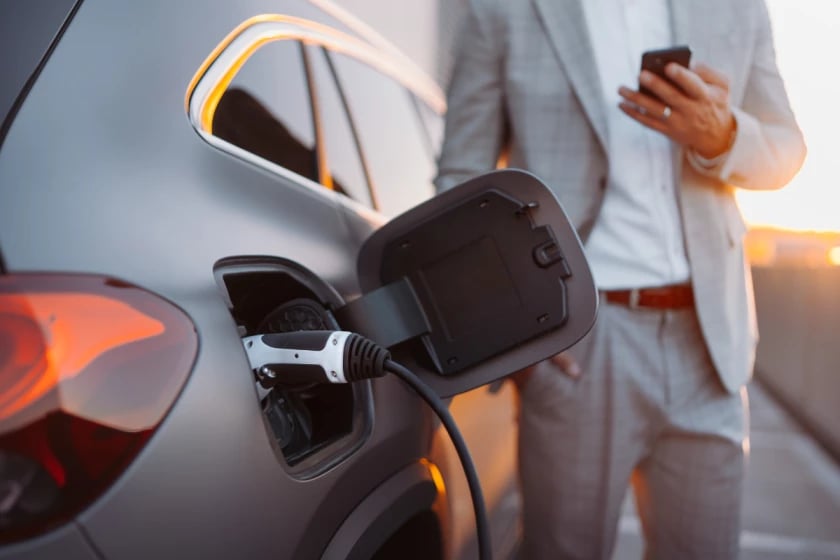STATIC VS. DYNAMIC LOAD BALANCING IN EV CHARGING
2 years ago
Load balancing, at its most basic, is exactly what it sounds like. In the context of home EV charging, this means ensuring that the load – in this case, the amount of power supplied to your EV through your home charging station – is balanced. Balanced here means not too strong, as this would risk destabilizing or potentially even overloading the power grid, and not too weak, as this would mean that your EV would charge too slowly.

While load balancing is often confused with load management, it is essential to remember that these are two completely distinct aspects. Load balancing is more of a safety feature, ensuring that the correct amount of power, as your vehicle needs, is accessed at all times. Load management, on the other hand, concerns allocating power in the broader sense of the grid to permit charging at optimal hours, operating multiple chargers, or allocating a specific amount of power to specific appliances.
In short, then, load balancing is your home EV charging station’s way of guaranteeing that the amount of power it draws from the grid and delivers to your vehicle is just right. There are two ways that EV charging stations achieve load balancing: static and dynamic. Before choosing the perfect home charging solution, it is worth taking a deeper look at these two power supply methods to decide on the best setup that best fits your needs.
STATIC LOAD BALANCING
The simplest way of characterizing the difference between static and dynamic load balancing systems is as “dumb” and “smart,” respectively. Static load balancing, the “dumb” system, deals with – as the name suggests – fixed, pre-set allocations of power. This means that your EV will receive a set allocation of power from a portion of your grid that will be maintained and kept the same at all times.
This is easier to explain with numbers. Let’s say that the grid connection of your entire home is 20kW. Your usage fluctuates between 1kW and 12kW depending on the time of day, the number of appliances you use, etc. This means that there is 8kW available for your EV charging station. To be safe, the EV charger might allocate 5kW for charging so that even when your house is at maximum load, there is still a buffer zone left to reduce the risk of an accident.
In the example above, your EV charger will always have access to 5kW – even when the rest of your home uses significantly less than 12kW. If you are only using 4kW, for example, then the EV charger will not access the 8kW that you are not using but will keep to its pre-allocated 5kW – hence “static” load balancing. While this makes charging times dependable and predictable, as they are always based on the same amount of power, static charging solutions can effectively waste the potential capacity of your grid.
DYNAMIC LOAD BALANCING
In contrast to the “dumb” nature of static load balancing, dynamic load balancing is the “smart” option. Here, the word “dynamic” means “changing” and refers to the amount of power that is drawn from your home grid to charge your EV. Whereas static load balancing works with a fixed, unchanging allocation, dynamic load balancing fluctuates up and down depending on how much surplus power there is available in your grid.
To return to the earlier example, a 20kW grid and a home that uses 12kW at peak hours, the dynamic load balancing solution would again allocate a safe buffer zone. It means that, like the static solution, it may only use 5kW of power at peak hours. However, the key difference here is that if the usage on the grid were to drop to 4kW, while static load balancing would waste that unused capacity, a dynamic load balancing system would now dip into that excess to provide far more power.
In this way, dynamic load balancing allows your home EV charging setup to access excess power in your grid and respond to usage fluctuations to charge your EV much more quickly when it does so. This means that there will be times when your EV may unexpectedly charge much faster than it would be you to stick to a static load balancing EV charger, but there are also key safety concerns to consider in favor of adopting dynamic load balancing on your grid.
KNOWLEDGE IS POWER
The way that dynamic load balancing works means that, in effect, you have eyes on your grid at all times. While this is convenient for charging your EV at home, the smart nature of dynamic load balancing can also be considered a key safety asset for your setup, as potential surges or emergencies are addressed immediately and without the need for user input.
This additional layer of safeguarding, paired with the potential to fully utilize all of the power available on your grid, makes dynamic load balancing the go-to choice for most home EV charging solutions. When you use a dynamic load balancing system, not only will your EV frequently charge faster than it would with static, but you will also be protected as the power supply to your EV can be automatically cut when necessary.
For this reason, dynamic load balancing is the preferred solution for most EV charging setups, and in the future looks certain to supplant static load balancing almost entirely. To ensure that your home EV solution is future-proof, then, it is best to look for a smart, well-built setup that incorporates dynamic load balancing technology – such as TeltoCharge. Adopting this technology ahead of the curve guarantees that your grid and home are kept safe, up-to-date, and prepared to incorporate any future changes in the home EV charging field.
Share it with friends!
We’re here to help!